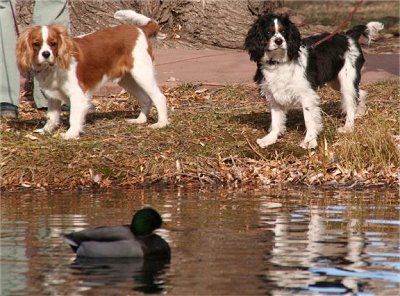Cavalier King Charles Spaniel
Cavalier King Charles Spaniel Ontario Rescue

-
Breed Group : TOY
-
Origin : England
-
Average Height : 12" - 13"
-
Average Weight : 13 - 18 lbs.
-
Life Span : 9 - 14 years
Photo Courtesy of : Cavalier Rescue USA
-
Size
1 2 3 4 5 6 7 8 9 10 -
Energy
1 2 3 4 5 6 7 8 9 10 -
Intelligence
1 2 3 4 5 6 7 8 9 10 -
Ease of Training
1 2 3 4 5 6 7 8 9 10 -
Hypo-Allergenic
1 2 3 4 5 6 7 8 9 10 -
Shedding
1 2 3 4 5 6 7 8 9 10 -
Good with Kids
1 2 3 4 5 6 7 8 9 10 -
Good with Other Pets
1 2 3 4 5 6 7 8 9 10 -
Guard Dog
1 2 3 4 5 6 7 8 9 10




